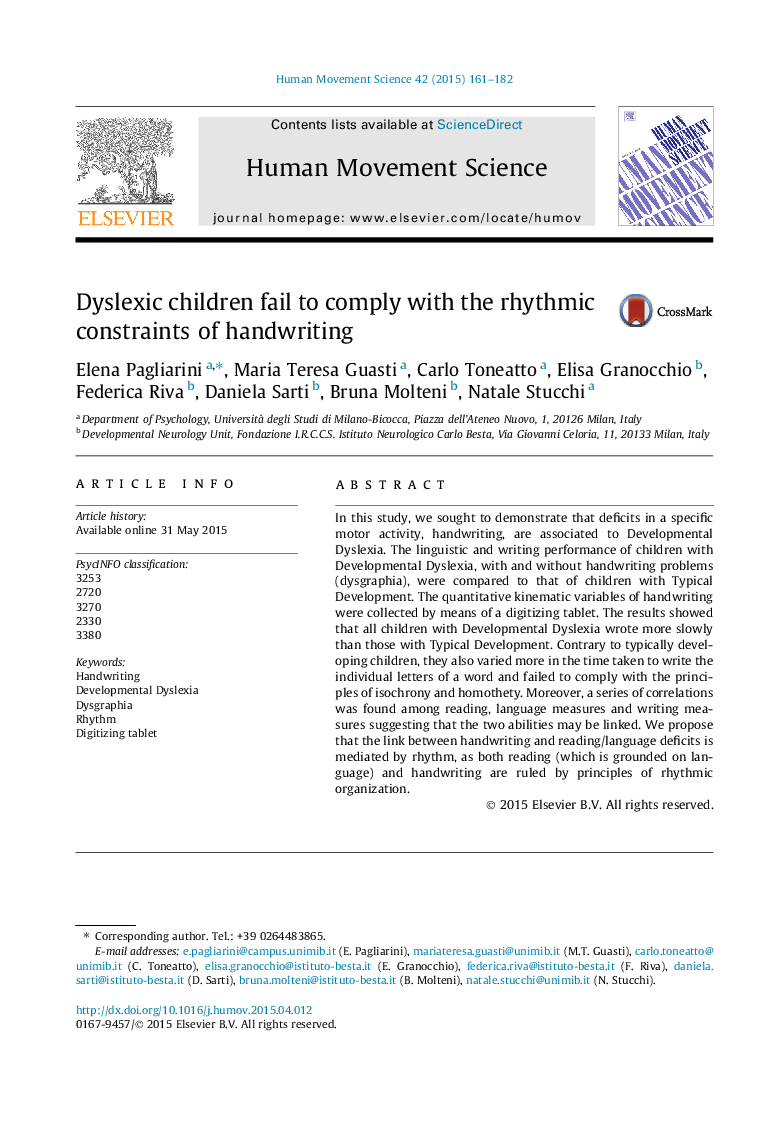| Article ID | Journal | Published Year | Pages | File Type |
|---|---|---|---|---|
| 928238 | Human Movement Science | 2015 | 22 Pages |
•Kinematic variables of writing were collected by means of a digitizing tablet.•Children with Developmental Dyslexia exhibit handwriting difficulties.•DD children did not keep the duration of the word constant across changes in size.•DD children did not keep the duration of letters constant across changes in speed.•Reading/language and writing measures are correlated.
In this study, we sought to demonstrate that deficits in a specific motor activity, handwriting, are associated to Developmental Dyslexia. The linguistic and writing performance of children with Developmental Dyslexia, with and without handwriting problems (dysgraphia), were compared to that of children with Typical Development. The quantitative kinematic variables of handwriting were collected by means of a digitizing tablet. The results showed that all children with Developmental Dyslexia wrote more slowly than those with Typical Development. Contrary to typically developing children, they also varied more in the time taken to write the individual letters of a word and failed to comply with the principles of isochrony and homothety. Moreover, a series of correlations was found among reading, language measures and writing measures suggesting that the two abilities may be linked. We propose that the link between handwriting and reading/language deficits is mediated by rhythm, as both reading (which is grounded on language) and handwriting are ruled by principles of rhythmic organization.
